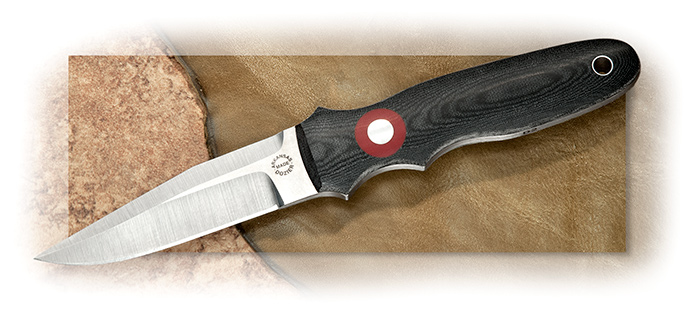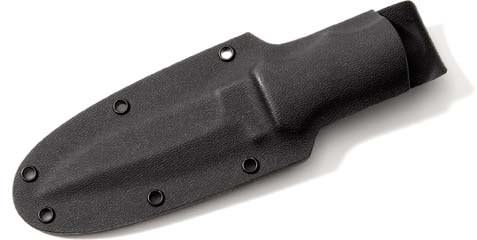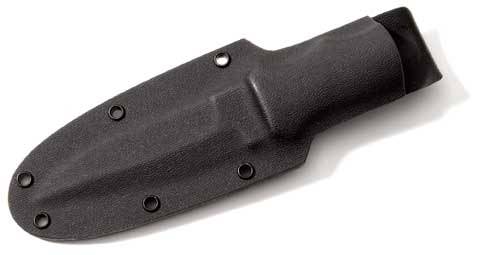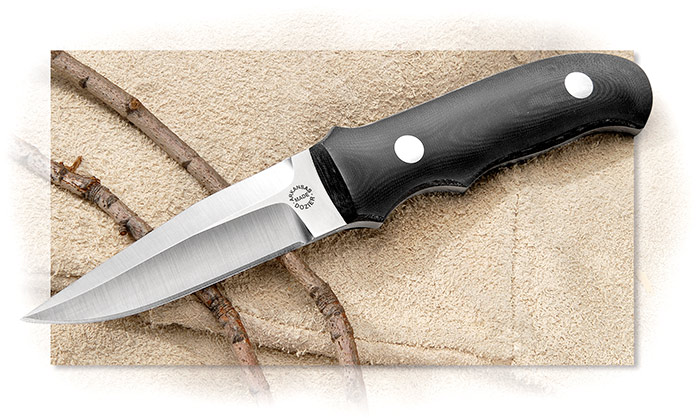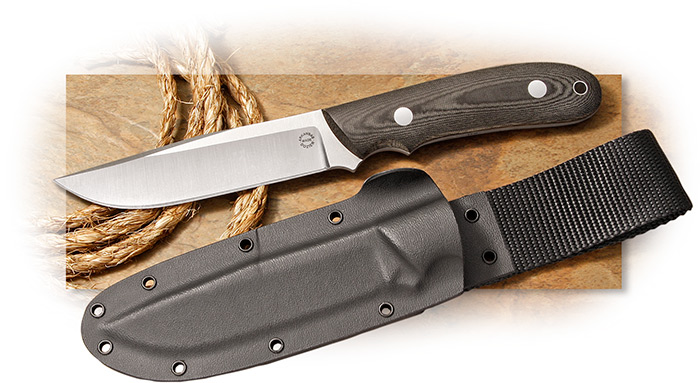Arkansas Made Dozier Arkansas Toothpick - Vertical Sheath
Item #: DK-AT1BV
$285.00
The Dozier Arkansas Toothpick is a practical knife with a 3-1/2" blade that is single edged but double ground. You can sharpen the clip portion of the swedge if you are willing to risk the various double edged laws around the country. The ergonomic shape of the handle has been carefully thought out by the maker and offers total control of the knife blade and point. This knife has a blade of D2 tempered to 60-61 Rc, it will really hold an edge and is reasonably rust resistant. The handles of black Micarta® have a single inlay, perfectly fitted, of red Micarta®. This knife comes with a vertical Kydex® belt sheath.
If a Dozier knife is not in stock when you order, delivery typically takes 3 to 4 months.
-
TypeFixed
-
BladeClip Point
-
Blade Length3-1/2″
-
Blade SteelD2
-
Rockwell60-61
-
HandleBlack Micarta
-
TangFull
-
Overall Length7-1/2″
-
Weight5.0 oz.
-
SheathVertical Kydex Belt
-
OriginUSA
Arkansas Made Dozier
Bob Dozier made his first knives when he was only twelve or thirteen years old. He told me the other day that after those few knives, he did not make another until he was about twenty-three and working as a rough neck in the oil fields in Louisiana. He talked about that first simple knife and then told a story about a co-worker asking to come to watch him make knives. Bob had made several knives by then and had created a small rough shop. He said the man stayed and watched until the knife was finished which took most of the day. When it was finished, he asked to look at it. After handling it for a while, he asked Bob how much he wanted for it. Without giving it any thought, Bob says he said $12.50. The man pulled out twelve one dollar bills and two quarters, laid them on the bench, got in his truck and left. Bob went in the house and told his wife he had just sold a knife which took him most of the day to make for $12.50. But, he told me, at that moment he knew he was going to be a knifemaker. That was about 1963.
If you had the opportunity to look through Bob’s collection of his old knives, you would find that he has made many different kinds of knives; hunters, Bowies and fighters, and more recently folders. You can definitely see a relationship between a pair of fighting knives he made in those early years and the practical, utilitarian fighters that began to appear from handmade knifemakers and knife manufactures from the late 1960s and became tremendously popular during the Viet Nam War era. These knives used to be called fighting knives. Today they are called Tactical Knives.

